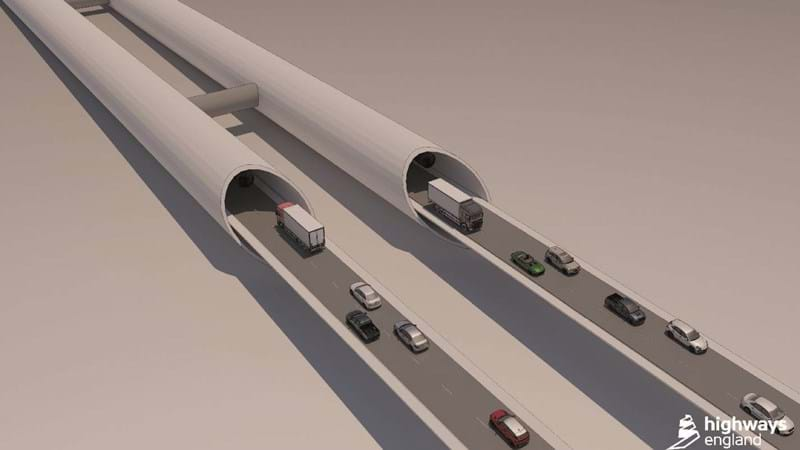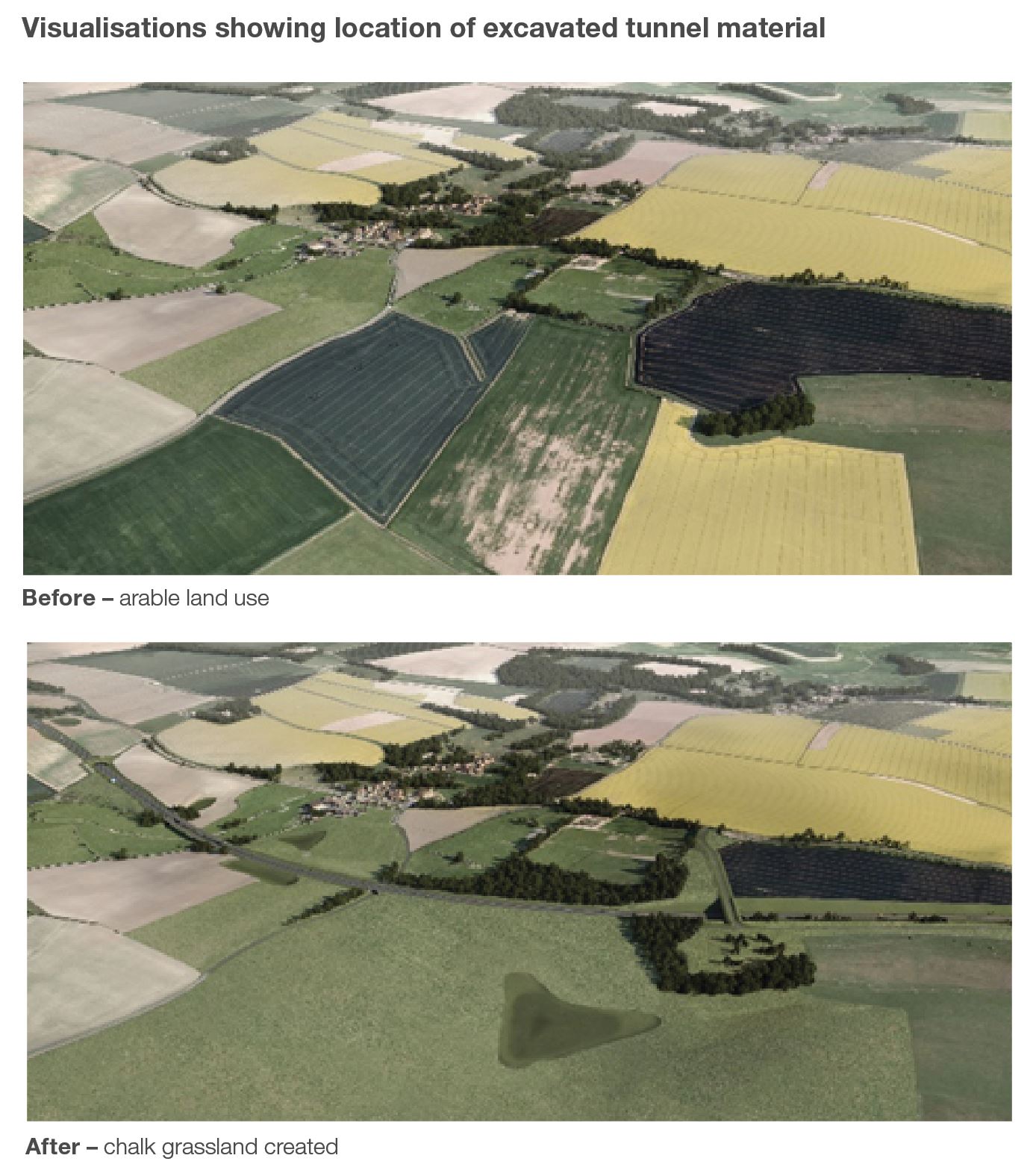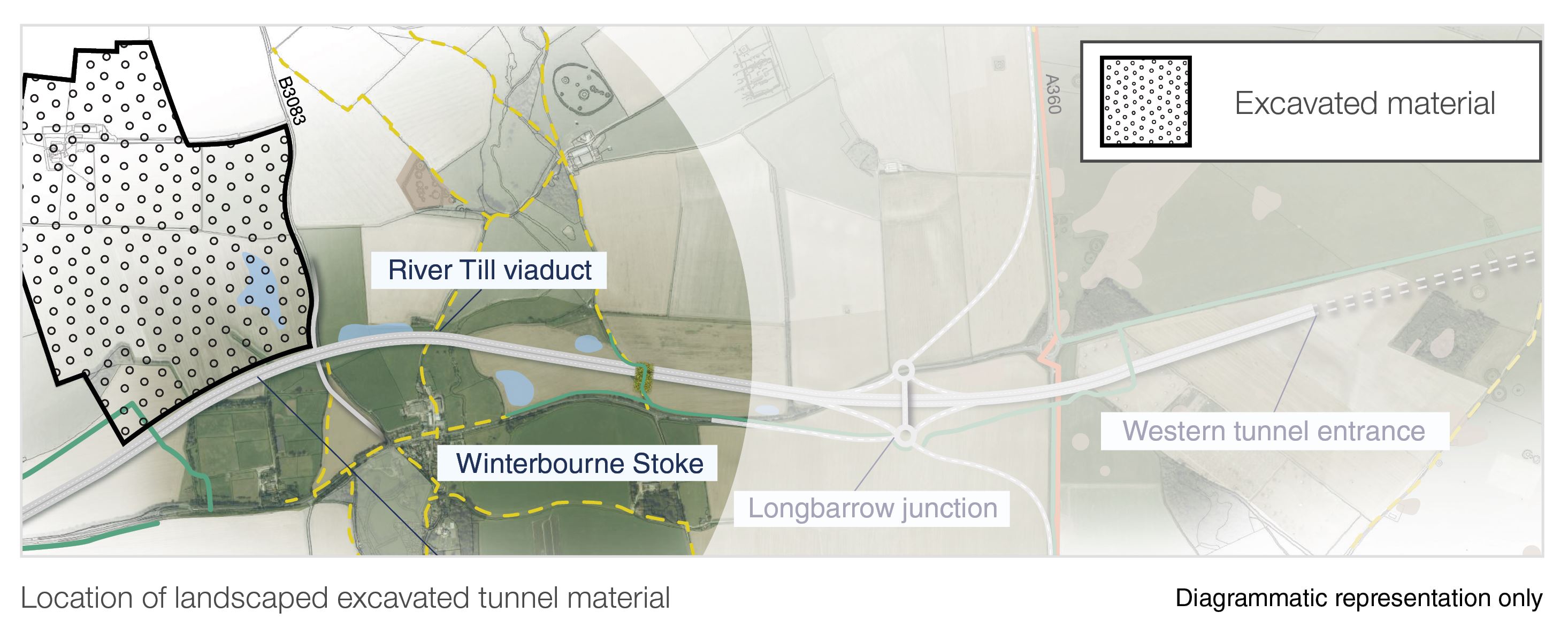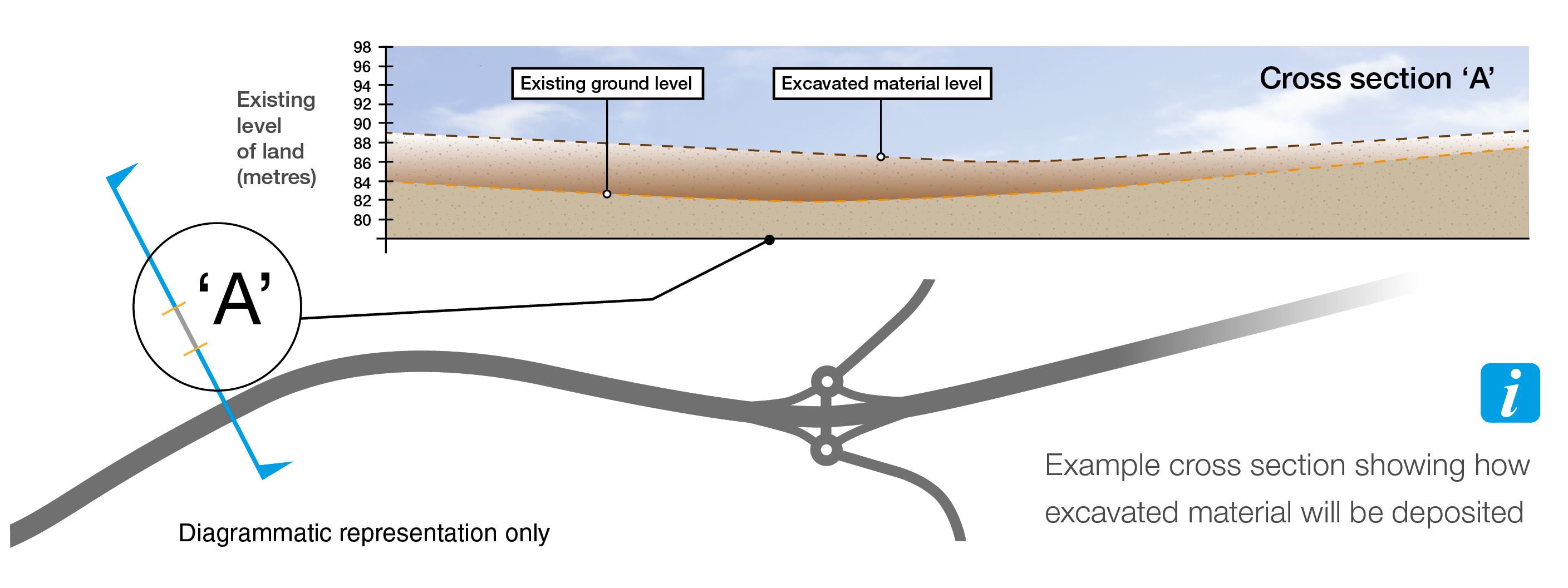Your questions about excavated tunnel material

What will happen to the material that is removed from the landscape during construction?
Building the two-mile tunnel in the Stonehenge World Heritage Site landscape will produce about 1 million cubic metres of excavated chalk, which we plan to use as landscaping materials along the new route and to create a new area of chalk grassland next to Parsonage Down, north of Winterbourne Stoke.

The excavated material will be treated, and excess water removed before being used. This needs to happen on site so that it can be transported to its final destination – even if some distance away. All the material will be used for landscaping as it is not suitable for the construction of structural highway embankments.
Where will the new chalk grassland be?

The new chalk grassland area being created east of Parsonage Down National Nature Reserve will be around 45 hectares (111 acres) in size. It will be just to the south of Cherry Lodge and the closest properties in Winterbourne Stoke are approx. 600 metres away.
How will the landscape change?
The material deposited here will not be heaped or in a mound but instead will be spread in thin layers across the area to recreate rolling downland, reflecting the existing dry valley. This falls from Cherry Lodge Lane to the valley rising as part of the new embankment to the north of Scotland Lodge farm.
It won’t be higher than any of the surrounding hill tops and gradients of the new slopes will be similar to those currently. There will be no sudden artificial changes in level, blending into existing ground to appear as natural as possible.
The depth of the material will vary between 1 and 10 metres – with the majority (by area) under 3 metres deep.

What planting will take place?
The land will be planted with chalk grassland and wildflowers with occasional scrub. Topsoil will be added to varying depths that will also help new areas mix in with the existing landscape. New planting will take several years to become established.
The excavated material will also be used along the new road to create verges and landscaping.

How did you decide where to put the material excavated from the tunnel?
We chose this location after we assessed all available options. We looked at whether we should use sites in the immediate vicinity or dispose of material further afield, and considered factors including impact on traffic, carbon, biodiversity, land use, noise and operational viability. For the majority of these, a local solution proved to be the better option. We then evaluated which nearby site was most suitable.
The location chosen is situated outside the World Heritage Site, and away from residential properties, but close to the western tunnel portal. It is large enough to take the material and has relatively limited visibility compared to some other options. Its closeness to Parsonage Down which is already chalk grassland can help the new chalk habitat to become established and increase the biodiversity of the local area.
Activity can be kept in one area, with no need to transport material by truck on the local road network – estimated to be up to 78 journeys per hour at the busiest times – which also reduces potential CO² emissions.
Why couldn’t you use Ministry of Defence land?
The use of MOD land to the north around the Salisbury Plain training area was investigated and ruled out at an early stage following discussions with the MOD.
One of the main reasons the site was not considered was because it would add unnecessary traffic to local roads. Anything up to ½ million extra truckloads could travel along the A360. Also, as a suitable site would need to avoid environmentally protected and military danger areas, it could be located some distance further away than the edge of MOD land.
